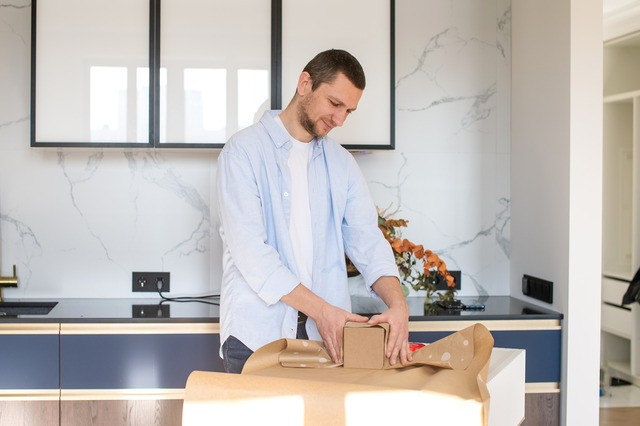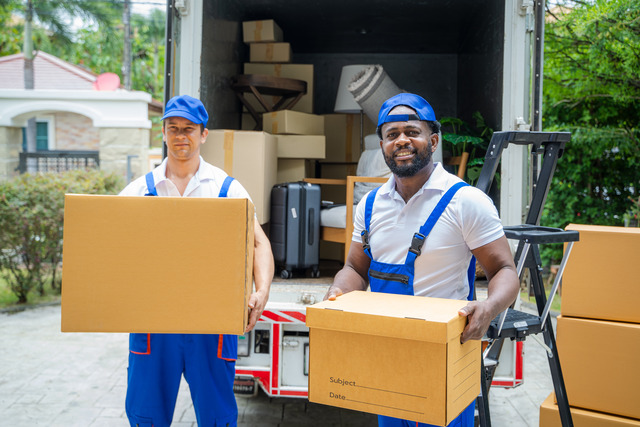When relocating your family to a new home, packing the kitchen is often the most challenging. A kitchen has more objects of different shapes and sizes than any other room because it has enough little supplies, pots, pans, utensils, drawers, cupboards, and food. Furthermore, many kitchen items are in the new house; you should donate or give them away. Organize your kitchen so you can cook or prepare meals up until the last minute. A systematic, step-by-step process for how to pack and move your kitchen is necessary when packing kitchenware for a move.

Steps For Packing Kitchen Items
Here are 3 items described for packing your kitchen items and how to move them:
1. Sort And Clear Out
Every action should begin with the organization. Go through your goods and establish a donation box before packing cookware. Decide what you would like to give to a thrift shop or charity based on how often you use it. Many charities provide donation pick-up services, so you should contact them.
We know that selling possessions can be difficult if you enjoy collecting beer steins or coffee cups. Besides, unpacking is easier to handle after decluttering. Generally, an item ceases to be helpful if you are unaware it has been missing for over a week.
Take time to organize your kitchen after removing worn-out or unneeded items, so keep this step simple.
Compile an inventory of the things you find to streamline the packing process. Next, arrange the goods based on their functional group and frequency of use. As you seal boxes shut, remember to mark them. When packing your new house and loading a moving truck, labels will save you time and aggravation. You can also include crucial labels like FRAGILE or THIS SIDE UP to avoid negligent loading.
Ensure you use high-quality packing supplies. Doing so will guarantee the security and preservation of your possessions. And arrangements during the relocation process. It provides comfort and lowers the possibility of harm. Also, it can help you save stress, money, and time. Always hire full-service movers; they will help you how to pack and move your kitchen.
2. Assemble The Necessary Supplies
Packing paper, packing tape, and labeling markers. Also, heavy-duty boxes in many sizes are necessary for kitchen packing. You could also invest in specialty dividers for packing. And stacking challenging objects like stemware to make things easy on yourself. Plastic wrap works great for holding stacked goods together. It will prevent them from moving. The kind you would use to wrap leftovers is ideal.
When buying packing goods for the kitchen, assuming you’ll need more than you expect is a good idea. Five small boxes, ten medium boxes, five big boxes, three extra large boxes, and three rolls of packing paper are enough for a family-sized kitchen. It is an excellent starting supply level, but you might need to return to the store.
3. Start Packing Kitchen Items
You can spread your packing paper on the counter and get going. Keep your inventory list and pen close so you can number your boxes and label them. Frequently used things are the easiest to pack initially. It’s vital to remember that kitchen boxes can become heavy because of dishes and glasses. Avoid overpacking your boxes; if you need more clarification, weigh them as you go. Hefty boxes are more likely to be damaged during moving. Even though your movers are influential and equipped to handle your goods.
Open a drawer or cabinet and begin wrapping. Organize things according to the following rules for how to pack and move your kitchen, whichever way you choose to start:
- Use packing paper to line the interior of your box. Take a piece of paper, crumple it, and put it at the bottom. It is a cushion to safeguard your belongings while piled and unstacked during your move.
- Position a plate in the center of your packing paper on a transparent table or bench. Fold it with a few sheets of paper, then place another plate on top. Repeat this step with another piece of paper after you have a stack of four plates.
- Arrange your plate bundles in your boxes to lessen the chance of breakage.
- Proceed with bowls, stacking them in two groups and arranging them.
- After filling the box base with these heavier objects, use a buffer layer of packing paper before adding the second layer. Take a piece of paper, crumple it, and set it on the boxed goods. It is a cushion to safeguard your belongings while they pile. And unstacked during your relocation.
- Add the glasses to the second layer of a box, but place them at the base with a bit of weight on top. Wrap each one and arrange them upright.
- If your cups have handles, make sure there’s enough paper to cover the handle.
- To maintain uniformity, utensils might be wrapped in groups of four or six. You can arrange them on top of your boxes before closing them.
Similar cutlery or flatware pieces, such as knives with knives. And spoons with spoons should also be securely wrapped in cling wrap. Knives should always be on their sides, pointed toward the box’s apertures, and never upwards. Some expert packers move the entire tray. They cover it with plastic when storing silverware in drawers. The value of your flatware and your preferences will determine this selection.
If the knives are incredibly sharp, it’s a good idea to pack them into a large Tupperware container. Or wrap them in a kitchen towel and fasten them with elastic bands.
Keep the pots, pans, other containers, and larger utensils separately.
When workable, use the nesting approach to place more miniature goods within bigger ones and wrap each pot and lid.
Use rolled-up tea towels or packing paper to create buffering support for your pots. And pans by filling the spaces between them.
For canned goods and pantry items, use a small box. To help stop leaks, liquid breakables should be covered in plastic bags. Place a piece of paper between glass jars containing spices or condiments.
Shipping small and medium-sized appliances is separate from the box. It is another step in learning how to pack and move your kitchen. It reduces movement while in transit, which is advisable. Before transport, unplug expensive and asymmetrically shaped appliances. Taped down with any moving parts and accessories removed. Packing paper was wrapped around them to provide padding inside the box.
Use a longer time frame for large appliances. Mainly, disconnect them from the water or gas mains if they need it. Refrigerators need appropriate defrosting and cleaning, so give enough time for this task. On the day of your relocation, empty your fridge if it’s coming with you. Your movers will remove these more significant things from the wall. They’ll take care of the rest as long as they’re disconnected.
It would help to pack vases in the smallest box, individually wrapped and adequately cushioned.
Pack only unopened wine bottles. Specialized wine transport provides for boxes to ease this process. Moving a few bottles in your kitchen is normal if you have an expensive wine collection. It would help to consider whether you need a different procedure to value and prepare. And transport your valuable wines in a climate-controlled setting. Some movers can help with this service and the high-value inventory procedure. For further information, contact the Piece of Cake customer service department.
Pack everything, such as baking trays, dish racks, and cookbooks, following the general packing guidelines, which state that heavier things should be placed at the bottom of the box and lighter ones at the top.
5 Best Full-service Movers
Here are the 5 best interstate movers we recommended. They are all full-service movers with packing, loading, unloading, and storage solutions. And they will also help you how to pack and move your kitchen.
Final Thought
With these pointers, we hope you now know how to pack and move your kitchen for a smooth and speedy transfer. You may bring everything to your new house undamaged by carefully cushioning and nestling. Any kitchen item should be moved with padding wrapped around it. Any vacant area should be filled with moving boxes. When unpacking, this best practice will spare you much heartache and stress.

